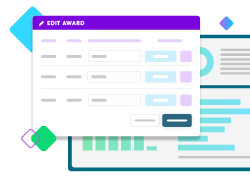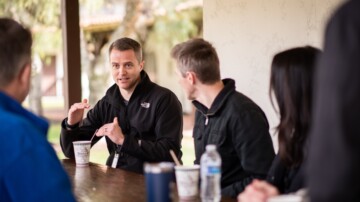4 Ways Your Grantmaking Organization Can Stay Relevant to Your Community’s Changing Needs

Managing a mission while meeting the evolving needs of a community is a complex and dynamic process. As communities change and grow, their needs and priorities shift. Grantmaking organizations must adapt to remain relevant and effective. This could be as simple as adjusting your guidelines to compensate for changing economics or as complicated as creating new grants and programs to meet those needs.
As you start to feel the priorities of your community evolving, here are four ways to evaluate and respond so your grantmaking organization stays relevant to your community’s changing needs.
Understand Your Mission and Evaluate Its Relevance
As the needs of your community change, your organization may find that its current mission statement is no longer relevant or effective. Updating your mission statement ensures your organization focuses on your community’s current needs.
Your mission statement should articulate your organization’s purpose, values, and goals. It should be concise and specific, and it should reflect the needs and priorities of your community.
When evaluating your mission statement, it is important to consider your organization’s history and culture and your community’s current and future needs. Your mission statement should be a living document that evolves as your organization and community change.
Engage Your Community
This means listening to feedback, understanding their concerns, and building relationships with community members and stakeholders. Here are some reasons why engaging your community is important:
You build loyalty:
Engaging with your community helps to build loyalty among your supporters. By providing meaningful opportunities for engagement, you can build a sense of community and encourage your supporters to become advocates for your mission.
You can recruit volunteers:
Providing volunteer opportunities that align with your community interests and skills can help to build a strong volunteer base that supports your organization’s work.
You can gather feedback:
Engaging with your constituent base allows you to gather feedback on your organization’s programs, services, and initiatives. This feedback can help you to improve your operations and better serve the community.
There are many ways to engage your community, including surveys, focus groups, town hall meetings, and social media. Whatever methods you choose, it is important to be transparent and responsive to community feedback.
Analyze Data to Predict the Needs of Your Community
As the needs of your community evolve, you may find that some of your organization’s goals and priorities are no longer relevant or effective. It is important to analyze your data regularly. Use your results to reassess your goals and priorities. This will ensure that your initiatives and programs align with the needs of your community and your mission statement. Here are some tips on how to build a data analysis strategy.
Define the problem:
Identify the specific problem or issue you want to address through data analysis. For example, if you run a non-profit organization that provides food assistance to low-income families, you may want to analyze data to identify trends in food insecurity in your community.
Collect data:
Make sure your data is relevant to the problem. This can include demographic data, such as age, gender, and income, as well as data on food availability, access to transportation, and other factors that may impact your community’s ability to access and afford healthy food.
Analyze the data:
Use statistical tools and techniques to analyze the data you have collected to identify patterns and isolate needs.
Interpret the results:
Once you have analyzed the data, interpret the results to gain insights into community needs. For example, you may find that food insecurity is highest among families with young children and single-parent households or that there are specific geographic areas with higher levels of food insecurity.
Develop programs and strategies:
Use the insights gained from data analysis to develop programs and strategies that address the community’s identified needs. For example, you may develop a mobile food pantry program to reach families in food-insecure neighborhoods or partner with local grocery stores to increase access to healthy foods in low-income areas.
Collaborate with Partners
No organization can meet the evolving needs of a community alone. Collaborating with partners can help you leverage resources, expertise, and community connections to achieve your goals.
Your partners may be your Board members or corporate partners that can provide financial support, in-kind donations, and volunteer resources to support your foundation initiatives and programs. It could even be community-based organizations, such as community development corporations, neighborhood associations, and faith-based organizations, that could help support initiatives that address your community’s specific needs.
Communication Is Key
Effective communication is essential to managing your mission while meeting the evolving needs of your community. Clear and concise communication helps build trust and engagement with community members and stakeholders, and it helps ensure that everyone is on the same page.
No two organizations are alike. One-size-fits-all strategies don’t exist. However, engagement with your community, using data to predict needs, collaboration with partners, and effective communication can help you stay ahead of the changing needs of your community.
Want to learn more about meeting the evolving needs of those you serve? Join us for a webinar panel, How to Respond to Crisis While Avoiding Mission Creep, where two experienced grantmakers discuss how they leaned into their experience and technology to inform organizational best practices for their foundations moving forward.
Manage your entire grantmaking workflow, from online grant applications through payments
Find out how Blackbaud Grantmaking™ fits your organization.




